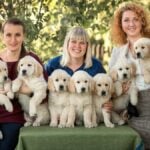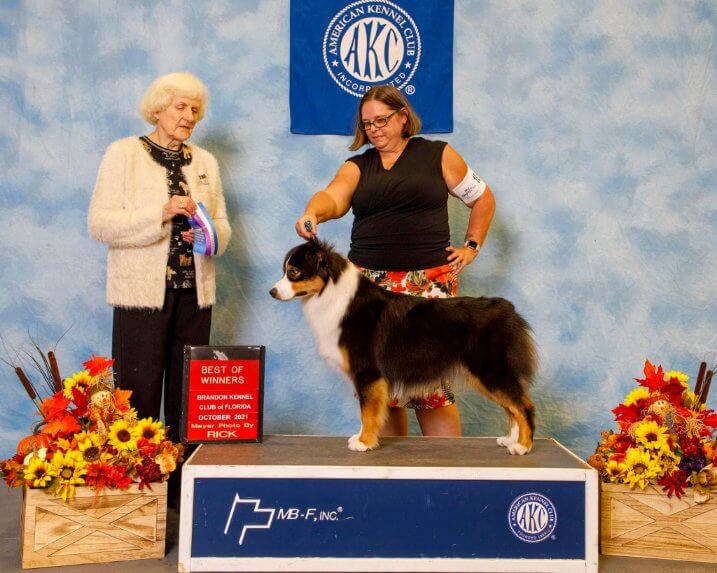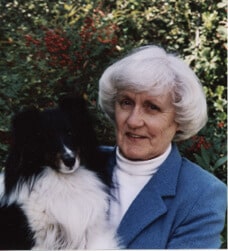
Home » Meet Herding Group Judge Janet Fink

Interview with Herding Group Judge Janet Fink
I have been an AKC judge for more than 20 years. During that time, I have judged many Specialty and All-Breed Shows, Sweepstakes, and special events. I also judge at UKC, ARBA, and IABCA shows. I have held offices in local Sheltie and all-breed clubs. For ASSA, the national Sheltie club, I have also chaired the Judges Education Committee.
As a retired science teacher, education is very important to me. When I prepared lessons for my science classes, I referenced as many sources as possible to bring a complete learning experience to my classes. I bring this same approach to studying a breed that I judge, starting with the materials provided by the parent club.
I am proud that the foundation for my Aletian Sheltie kennel was a bitch that completed her Conformation Championship and a Utility Degree in Obedience at a time when those were the top titles possible. It was satisfying to earn Championship points and an Obedience leg at the same shows. I recently lost my Champion Sheltie bitch that was awarded BOB at a Specialty Show at eleven and a half years of age.
Judging at conformation dog shows has given me the pleasure of meeting many people who enjoy the sport of purebred dogs. Evaluating the merits of their dogs is a privilege.
Where do I live? How many years in dogs? How many years as a judge?
Janet Fink: I live in Southern California. I have been in dogs for 40-plus years. I recently received my 25 years judging pin from AKC.
What is my original breed? What is/was my kennel name?
Janet Fink: My original breed is the Shetland Sheepdog, and my kennel name was Aletian.
Can I list a few of the notable dogs I’ve bred? Any performance or parent club titles?
Janet Fink: My foundation bitch was CH Amstad Aleta of Glyn-Ayre UD, one of only a few Sheltie bitches to earn dual titles at the time. One of our favorite males was AM/CAN CH Amstad Aletian Merit Fire.
What are the qualities I most admire in the Herding breeds?
Janet Fink: I appreciate the diversity of make and style of herding in the breeds within the Herding Group.
Have I judged any Herding Group Specialties?
Janet Fink: Herding Group Specialties I have judged include the Herding Group Association of New Jersey and the Alaska Herding Group Club.
Do I find that size, proportion, and substance are correct in most Herding breeds?
Janet Fink: Size, proportion, and substance are mostly correct in Herding breeds. This is probably due to their competition in performance events as well as at conformation shows. And many of them are actively involved with doing the work for which they were bred. Structure and movement must be proper to allow any breed to perform its specific function.
Is breed-specific presentation important to me as a judge? Can I offer some examples?
Janet Fink: Since Herding breeds are so varied, they must be presented in a manner that emphasizes their adherence to individual breed hallmarks as well as their ability to perform their herding tasks.
What about breed-specific movement? Do I demand this from Herding Dogs?
Janet Fink: Entries in the Herding Group, as well as entries in other Groups, should move in a breed-specific manner that allows them to perform their duties, if necessary, for long periods of time. Too often, Group judging emphasizes showmanship and side gait rather than breed-specific hallmarks.
Are the Herding breeds in good shape overall? Any concerns?
Janet Fink: Most of the Herding breeds are presented in proper make and condition for their function. I am often concerned that when the entries advance to the Group level, an undue emphasis is put on showmanship and side gait. Herding breeds were not developed to make friends with anyone who appears in front of them. While they should not be shy or threaten, emphasis in Group competition is often misplaced on showmanship.
In my opinion, how do today’s exhibits compare with the Herding Dogs of the past?
Janet Fink: Most Herding breed temperaments have improved. Some have also improved proportions and structure so that their particular style of movement is more efficient for their function. For example, Collie movement has improved while the elegant profile and head quality so important for this breed have been maintained. Another example is my original breed, Shelties, which have undergone several transitions in proportion, and therefore, movement. And Shelties often have more coat, and the heads are becoming more Collie-like, with narrower backskulls. If the backskull becomes too narrow, the expression changes and the eyes are set closer together.
Why do I think Herding Dogs can often become outstanding Show Dogs?
Janet Fink: Many of the Herding Dogs can become outstanding show dogs since they are often dual performers, and therefore, sound in structure and movement. Most are shown in proper condition and with pleasing temperaments.
Just for laughs, do I have a funny story that I can share about my experiences judging the Herding Group?
Janet Fink: At a recent show, I asked one of the first entries to gait around the ring. When nearly all the way around, the handler’s trousers fell down to his ankles. I offered for him to take time and leave the ring for “adjustments” and then return to complete the exam, but after pulling his trousers back up, he said he was ready again. (He did complete his entry’s presentation without further incident.)
